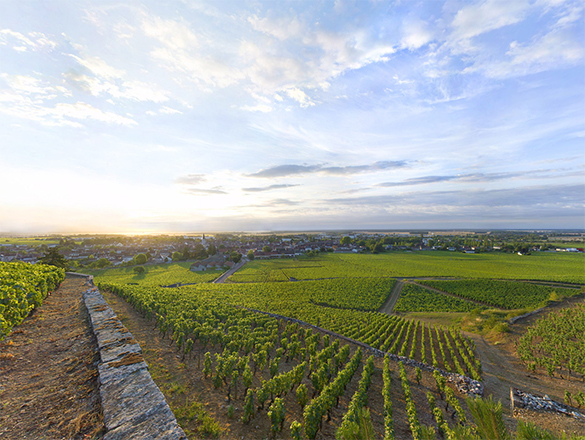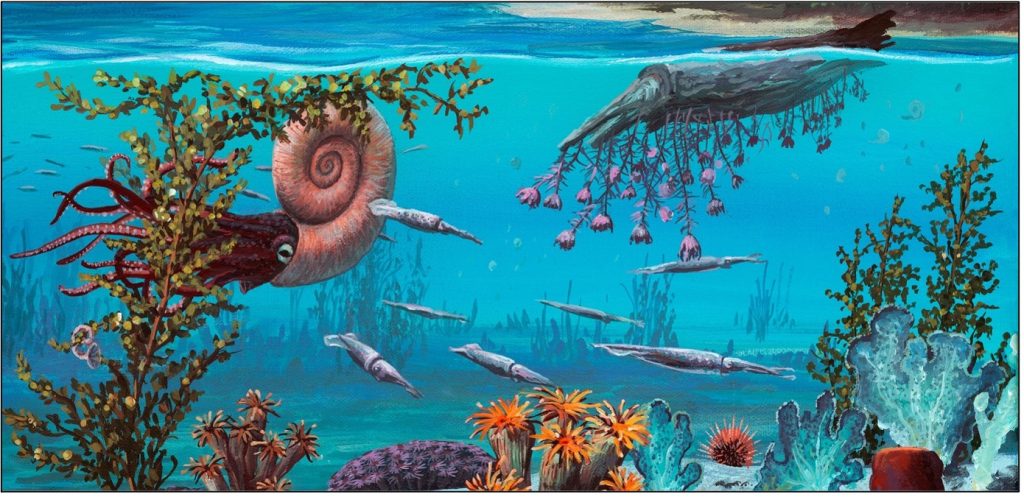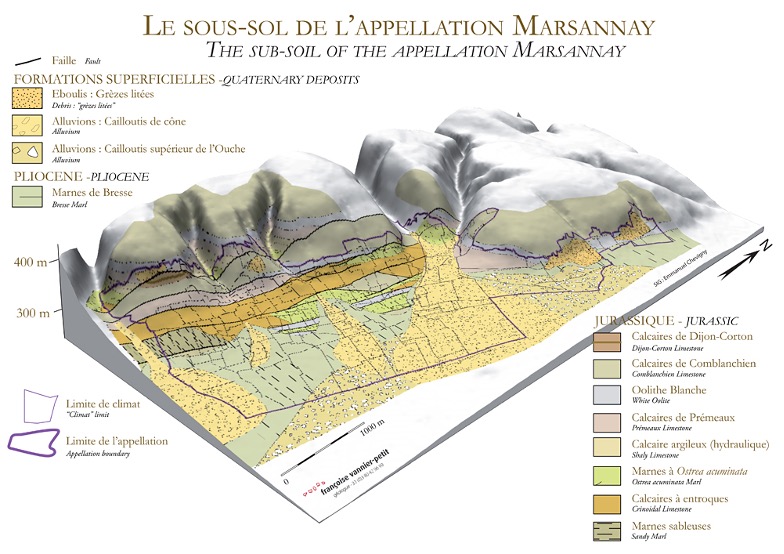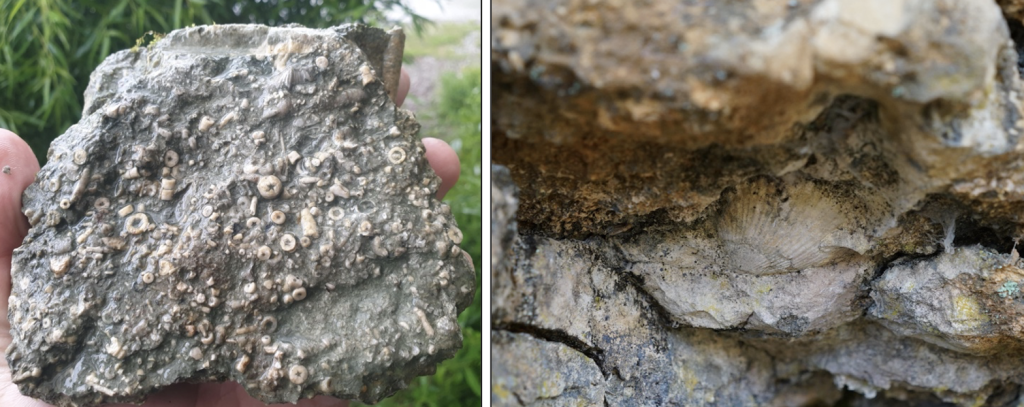Ancient seas make fine wines. We already touched on the wines of the Bordeaux region last year. Now we go for a nice Burgundy on today’s stage of the Tour de France. It is a is a 25,3 kilometer time trial from Nuits-Saint-Georges to Gevrey-Chambertin in the Burgundy wine region.
As cyclists speed through valleys and vineyards, they’re traversing a remarkable geological history. Beneath their wheels lies a tale dating back to when dinosaurs roamed. France was submerged under a warm, shallow sea—much like today’s Bahamas. The remnants of that ancient sea now grace the hillsides, playing a crucial role in making Burgundy’s wine world-renowned. But how exactly does the geology of Burgundy influence its wines? Let’s pedal back 200 million years to uncover the secrets.
Terroir
The concept of terroir—comprising climate, soil, and winemaking practices—explains how geology impacts what ends up in your glass. Burgundy’s terroir is particularly distinctive. The Côte d’Or appellation, where 60% of the grapes are Pinot Noir, benefits from a warm, dry climate that consistently produces exceptional wines.

Expect a glass of intense ruby-red wine with strawberry and cherry flavors, soft tannins, refreshing acidity, and sometimes a hint of earthy, leathery notes. If white wine is your preference? Chardonnay offers deep golden hues with floral, green-apple, and nutty flavors. We focus on the soil here where some ancient critters left their mark.
Jurassic critters: the fossil legacy
Around 200 million years ago, Burgundy was part of a vast tropical sea. It’s where limestone formed from the calcium carbonate shells of ancient marine organisms. Over time, these shells accumulated, solidified, and cemented into limestone. This limestone is believed to impart the zesty acidity and distinct minerality that Burgundy wines are famous for. Fossils of shells, crinoids, ammonites, oysters, and corals are often found in these rocks, the legacy of creatures from an era when dinosaurs roamed nearby lands.

Not all limestone is created equal. Its properties significantly affect soil drainage and, consequently, grape quality. Good vineyard soil needs to be well-drained. Limestone’s porosity can provide excellent pathways for water, nourishing the deep-reaching grapevine roots. In Gevrey-Chambertin, where the time trial ends, soils derived from crinoid limestone crumble easily, creating well-drained soils perfect for Premier Crus like Lavaux, Estournelles, and Clos St Jacques.
Interestingly, the Comblanchien limestone found in Côte de Nuits where the time trial begins is much harder yet still produces excellent wines. Recent studies suggest that features called stylolites—once thought to impede fluid flow—might actually facilitate it. Read more on the subject of stylolites because science of the ancient seas and its limestones also helps to make fine wines.

Aging like fine wine
Burgundy’s rocks and soils have evolved over millions of years through tectonic shifts, mountain building, and ice ages, creating the perfect conditions for world-class wines. These Pinot Noirs are versatile, enjoyable both young and aged. While wine aging might feel like eons to vintners, it’s merely a blink of an eye in geological terms. The careful balance of time and nature’s elements results in wines that can command thousands of dollars per bottle.
As cyclists race through Burgundy today, they’re not just competing for a stage win—they’re passing through a landscape that tells a story of ancient seas, tectonic forces, and the delicate art of winemaking. This unique terroir is a testament to how geology and human craftsmanship combine to create some of the finest wines in the world.

Sip, savor and reflect
It’s finally time to taste. For us during the ride, for the riders maybe a small glass afterwards? Next time you enjoy a glass of Burgundy, remember the ancient seas that laid the foundation for these fines wines. Just like any exquisite wine, Burgundy’s geology has aged gracefully, offering a perfect blend of natural history and human tradition.
So, as the cyclists speed through the valleys, let’s raise a glass to the remarkable terroir that makes Burgundy truly special. Cheers to the riders, the wine, and the ancient rocks that make it all possible!
NB: Blogs in other languages than English are all auto-translated. Our writers are not responsible for any language and spelling mistakes.






